This is several good articles-written by Evan Yeung on vintage Grand Seiko....
Please see e link below:
http://www.monochrome-watches.com/seikos-affinity-to-hi-beat-movement-part-one/
The History of Grand Seiko Hi-Beat Movements
Seiko’s Affinity to Hi-Beat Movement – Part One
Perfection – an exemplification of supremacy; an unsurpassable degree of accuracy. Perhaps these are how Seiko defines what a true timepiece can and should be. Watch complications may be enticing to the buyer, but without the needed accuracy and precision, that infatuation is short lived. Hence, Seiko’s quest for higher frequency was begun, and ultimately the Grand Seiko was born.
Simplicity over complexity, legibility over decorations, and most important of all accuracy over function; the people at Seikosha (Seiko Manufactory at Nagano prefecture) made these three values inform their design from conception, such that the very notion of something as simple as telling the time can be perfected. Seiko set a goal that was higher than any Japanese watch company had ever accomplished: to surpass Swiss chronometer standards and create a timepiece to be called the King of all Watches – this was the starting point of the legend that is Grand Seiko.
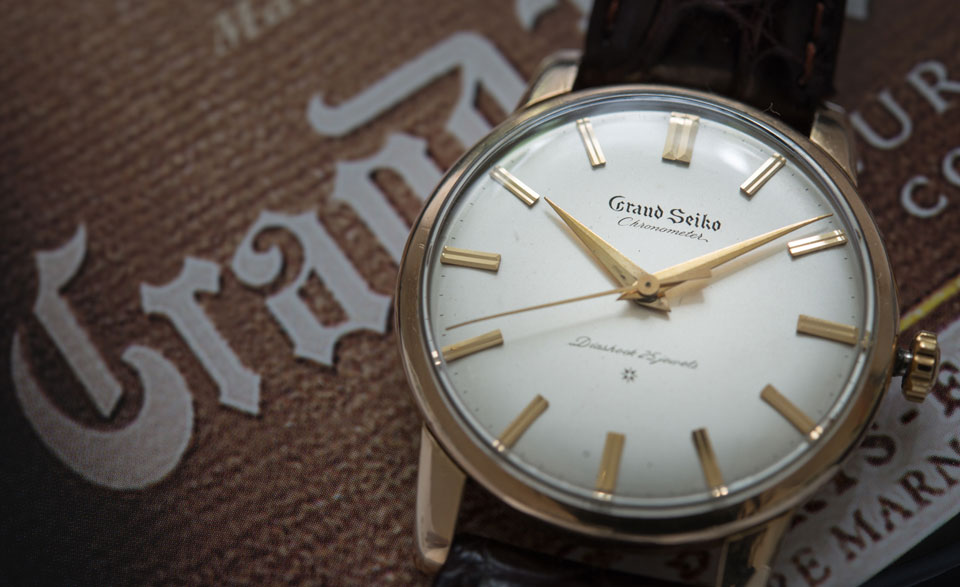
In December 1960, the step towards Seiko’s vision of creating a chronometer certified piece was fulfilled. The very first Grand Seiko debuted in Tokyo. Powered by a manual-wound caliber 3180 and beating at a frequency of 18,000 bph (beats per hour, sometimes also referred to as vibrations per hour) or 5 bps (beats per sec). It featured a simple yet elegant gold-filled case, with a chronometer designation on the dial. The very first Grand Seiko was finally a reality.
The chronometer designation may have been the initial goal of the original Grand Seiko, but in actuality, the rigorous testing regimen conceptualized and conducted internally by Seiko was a cut above the standards laid out by COSC. A few years later, the chronometer designation was removed, declaring that the Grand Seiko watches were in a league of their own.
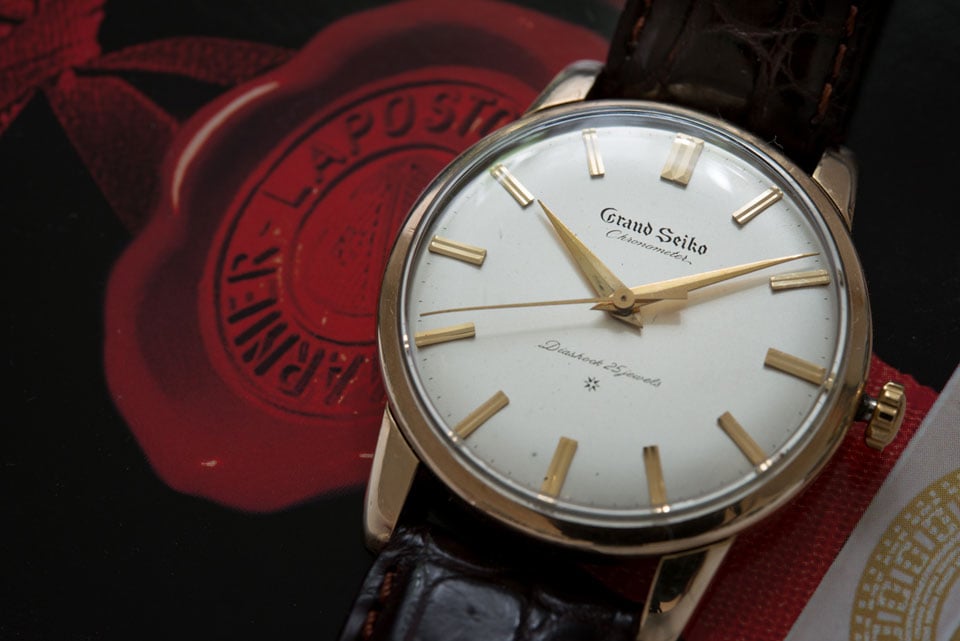
With such an unprecedented milestone, most manufacturers would have tried to milk this achievement as much as they could, but Seikosha is not your typical organization. Their commitment to creating the ideal watch has yet to waver, and yet that stability is not enough for Seiko to be the leader in the industry. As Mad Men account executive Pete Campbell once declared, “Stable is one step back between success and failure”.
So with such high momentum from the success of the original Grand Seiko, the watchmakers of Seikosha decided to push the envelope even further. Back then, a frequency of 18,000 bph was just average among manufacturers. Advancements on better mainspring tension and the development of better materials and lubricants paved the way for manufacturers to explore the concept of a higher frequency of beats for greater accuracy. As such, the race for higher-beat movement commenced.
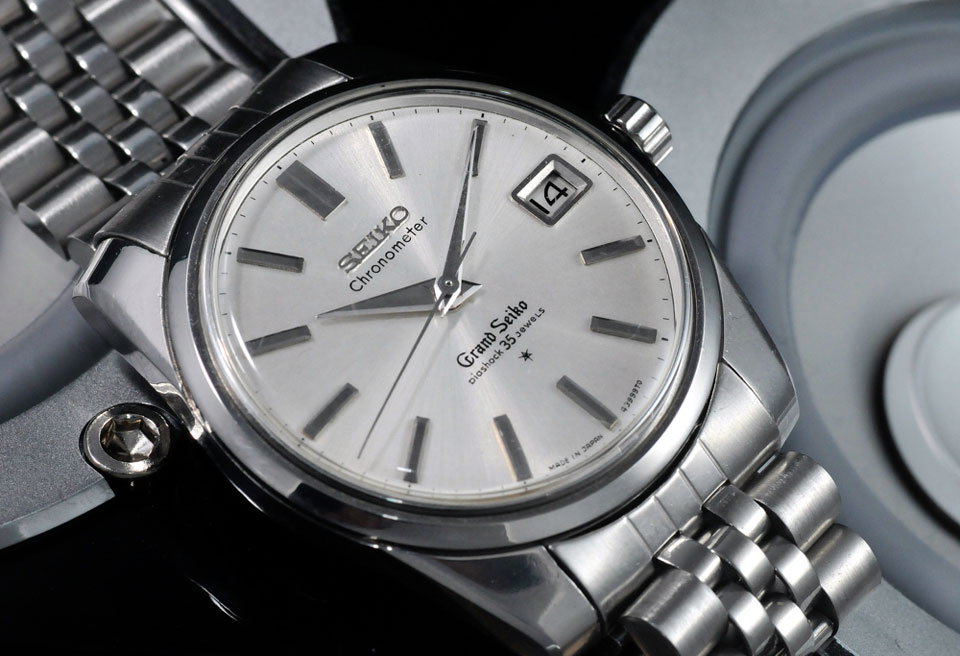
In today’s standards 28,800 bph (or 8 bps) is fairly common among wristwatches, so one could easily imagine the gravity of developing a 36,000 bph or 10 bps timepiece back in the 60s. Similar to the automatic chronograph race, a joint effort among Swiss makers was needed to develop the very first 36,000 bph hi-beat movement.
Girard Perregaux headed that effort in 1966, and was first to create a 36,000 bph movement. In 1967, Seiko found their stride, their very first Hi-Beat caliber – the hand-wound 5740C. But interesting to note that the cal. 5740C was not built into a Grand Seiko, but rather it was the Seiko Lord Marvel that was honored as the company’s first 36,000 bph or 10 bps watch.
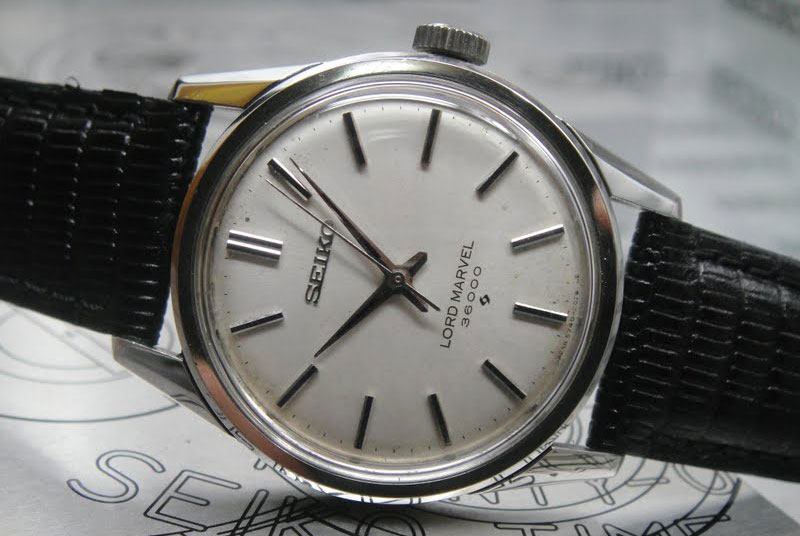
A year afterward, the Hi-Beat Grand Seiko was finally unveiled. The 61GS developed from a base Seikomatic 5, powered by a 6145 automatic Hi-Beat (36,000 bph) caliber with 25 jewels. To say that the 61GS was not only Seiko’s first, but archetypical automatic 10 beat per seconds model is an understatement; to date, the 61GS remains one of the finest achievements by the brand. It was essentially one of the best, if not the best automatic movement Seiko has ever made.
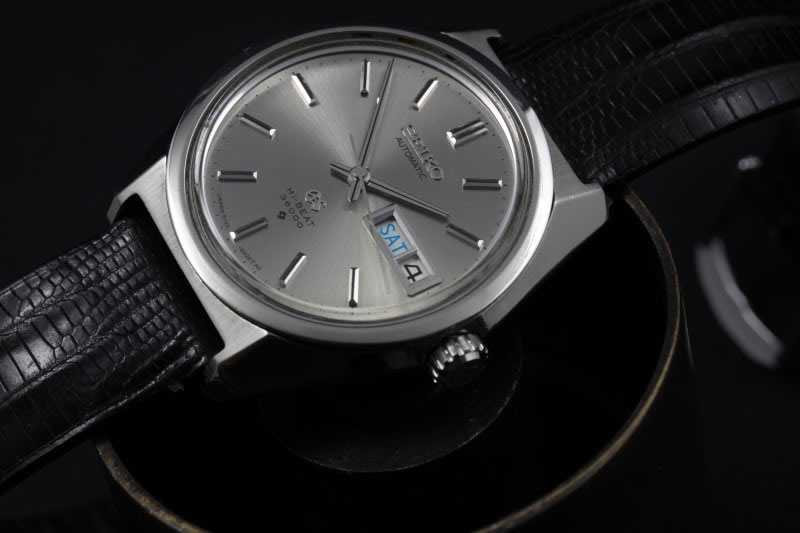
Movement Details: Seiko Automatic Cal. 6145/6146, 25 Jewels, Hi-Beat 36,000 A/h, auxiliary hand-winding and hacking mechanism.
There are actually two variants of the first Hi-Beat GS, both of which were released back in December of 1967. The photo shown here is the 6146-8000 caliber which features a day and date complication, unlike the standard6145-8000 which features only a date function. A total of 36,000 of these gems were produced, and it is obvious where Seiko got that number from.
Why the fixation on higher-beat movement? Is faster really better, given that mechanical gears tend to degrade more rapidly as beat frequency increases? Despite the pros and cons, why are some manufacturers like Seiko and Zenith insisting on having higher-beat movements while others are not? The answer lies in the escapement itself, or the regulating organ, that comprises of the balance wheel, hairspring, escapement wheel and pallet fork. These parts combined oscillate at a certain natural frequency. For a 5 bps movement, the natural frequency would be 2.5 Hz.
A properly designed escapement would settle into a stable oscillatory mode and maintain a constant swing. The design would not be a problem if no mechanical disturbances were delivered to it. However, the natural motion of our hands subject the system to mechanical disturbances that can affect and cause timing errors. Studies have shown that the movement of our wrists are rated at frequencies below 3 Hz (6 bps). As our hands approach the natural frequencies of the escapement, the higher the likelihood for timing errors. So in essence, the higher the beat rate of the movement, the lower would be its sensitivity towards mechanical disturbances. .
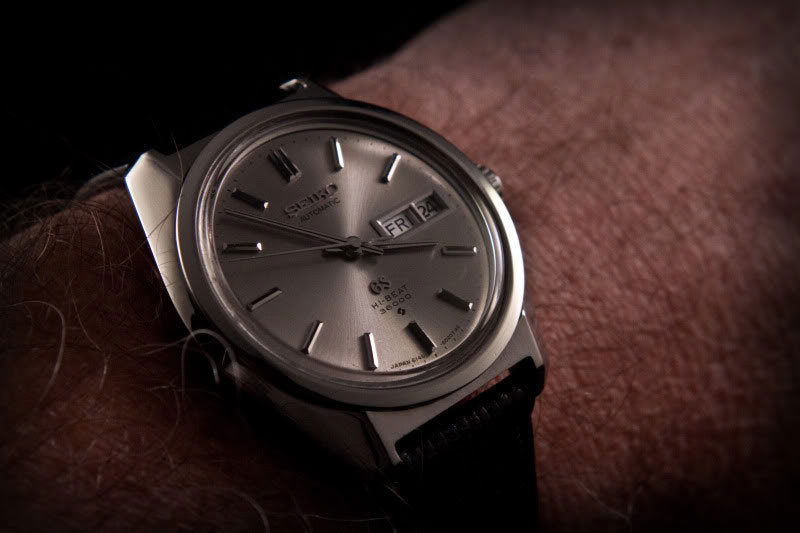
Now that we have that concern about accuracy out of the way, the other concern often pointed out by collectors relates to the Hi-Beat movement having “special needs” when it comes to servicing: it requires a special lubricant to maintain those high rotational rates. Evidently, the Hi-Beat Zenith El Primero chronographs were said to require Molybdenum Sulfide-based lubricant, implying a special servicing need. However, there are movement experts who disagree with this allegation of “special needs,” based on their own actual experience working with Hi-Beat pieces.
Sufficed to say, such a claim is still an open topic today. But given the reliability and durability that the Grand Seiko line has been famous for, and adding to that the history and heritage that comes with it, a Hi-Beat GS is certainly one timepiece to own. Ultimately, the ideal watch remains an elusive goal, and the makers of Grand Seiko did make a simple watch that nonetheless stands out from the crowd. Perfection remains to be a dream, but boy did they get close.

Stay tuned for the next part of Seiko’s Affinity to Hi-Beat Movements. Next up would be King Seiko.
References: For a detailed technical analysis on hi-beat movements, check this article on Timezone.com. For more information about Grand Seiko pieces, check out their official website.
Photo credits: Photo 2, 3, 4 and 8 go to Molle Watch (click here). Credits for photo number 1, 6, and 7 go to Tony from Halfpastthehour (click here).
---------------
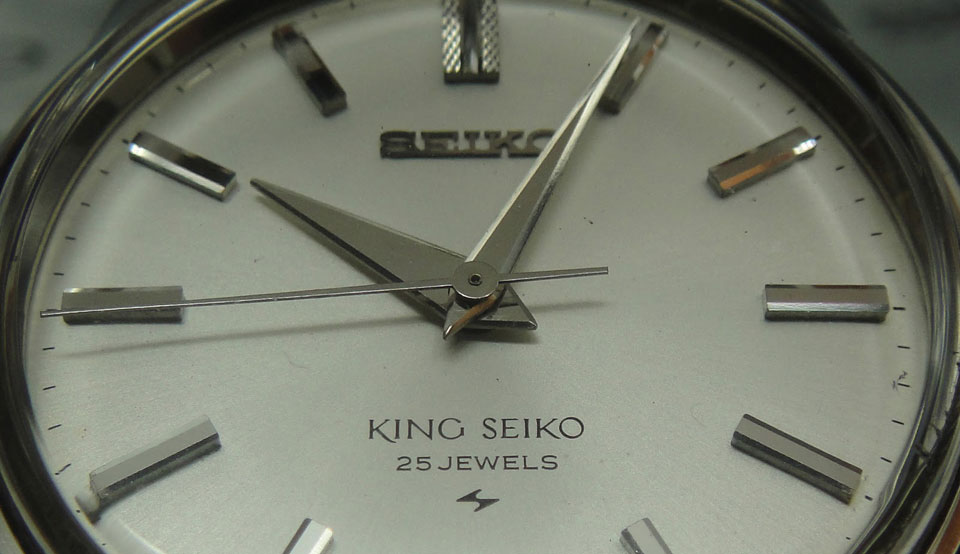
The earliest model of the King Seiko was produced in 1963 by Daini Seikosha Co., as an answer to the release of the 1960 Grand Seiko by Suwa Seikosha Co. The internal rivalry between the two wholly owned subsidiaries had led to the race of becoming the company’s flagship brand. The perfection of accuracy and precision was their common driving force for glory, so it was inevitable that both brands (The GS and the KS) culminated their achievements by each creating a Hi-Beat timepiece, for reasons we already discussed in the first part of this series.
A few years after the release of the original GS, the first generation King Seiko was produced. It was a hand-wound, unnumbered 25-jewel caliber. The first King Seiko never really made progress as the lack of chronometer rating gives an impression that it was a lesser model of the original GS. After the original KS, the King Seiko caliber 44A models were released which were housed in different variations of cases (more specifically, with various case back emblems). These 44-series calibers (18,000 bph) produced by Daini Seikosha went toe-to-toe for years with what the Suwa group had developed for the GS line. By 1964, the first chronometer KS was produced, but was later renamed as a 44GS due to the 1966 chronometer appeal (i.e. GS standards were stricter than the Chronometer standards).
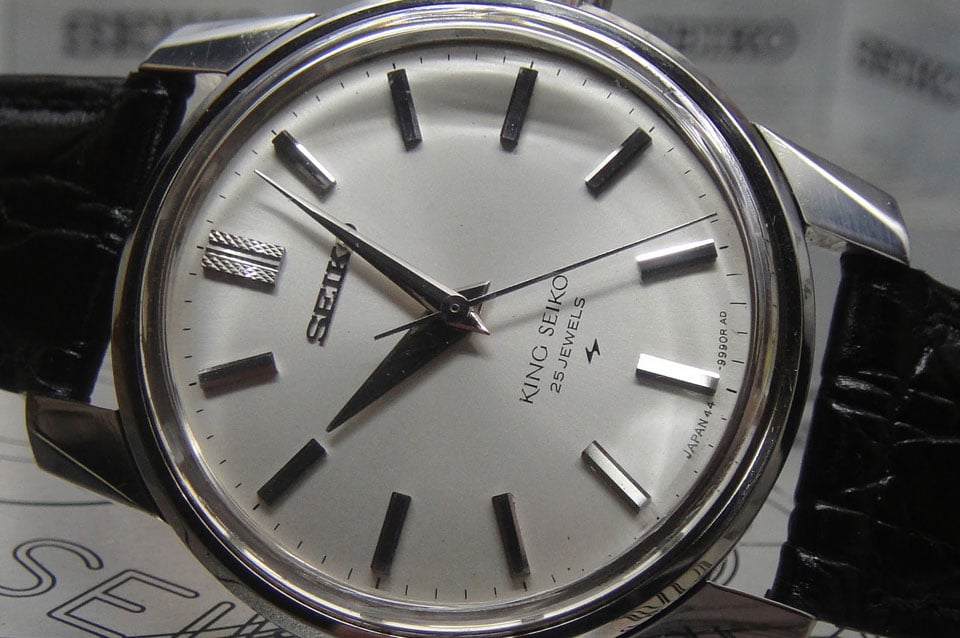
The 44 series were all hand-wound calibers for the KS line that beat at a normal 18,000 bph. It was thus inevitable that the KS would soon go the same route as the Lord Marvel and GS did, producing higher-frequency movements. The result was the creation of the King Seiko 45 series, a manual-wound movement with 25 jewels which beat at an astounding 36,000 bph or 10 bps, thus relegating the 44 series to what was now considered the low-beat calibers; the 45 was the new Hi-Beat caliber.
Around the 6 o’clock marker “Japan” and the reference number are printed on the dial of both King Seiko and Grand Seiko. This makes it relatively easy to recognize the exact model.
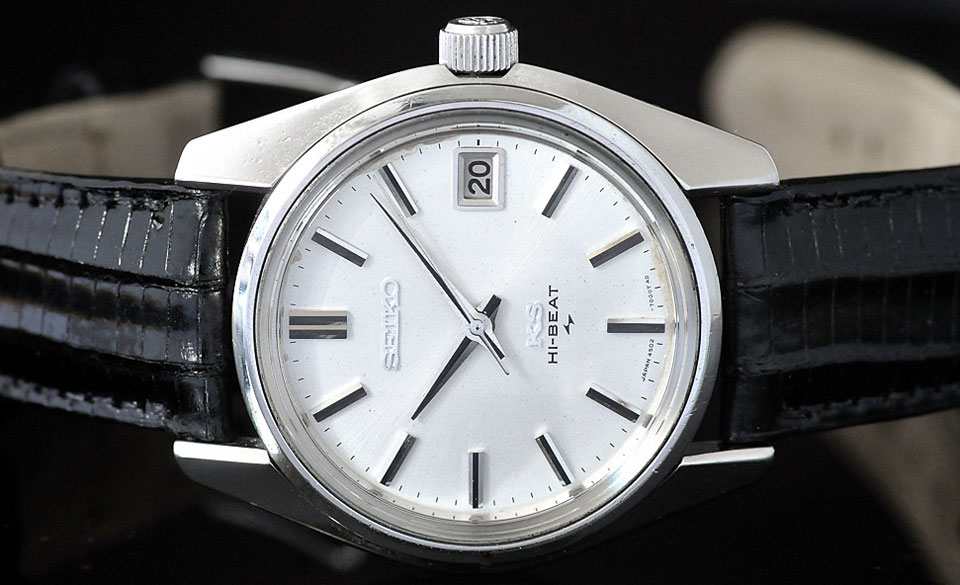
The King Seiko 45 series came with a wide array of different cases, design styles, and most importantly standards, from a regular KS to Superior Chronometer rating, and labeled as such on the dial and case back designs. The standards here were not exactly for show: a superior chronometer standard can have a timepiece with an accuracy of -6/+9 sec/day. And let us not forget that this was a true Hi-Beat (10bps) timepiece made back in the 60s.
The accuracy was so unreal for that period of time that Seiko began labeling them to be at the class ‘A’ standard for Seiko as far as accuracy was concerned. Then finally, before the quartz crisis changed everything, the KS 5246 was released, the first automatic Hi-Beat KS; it only beat at a frequency of 28,800 bph, less than the 36,000 bph true Hi-Beat, but higher than what was the norm back then.
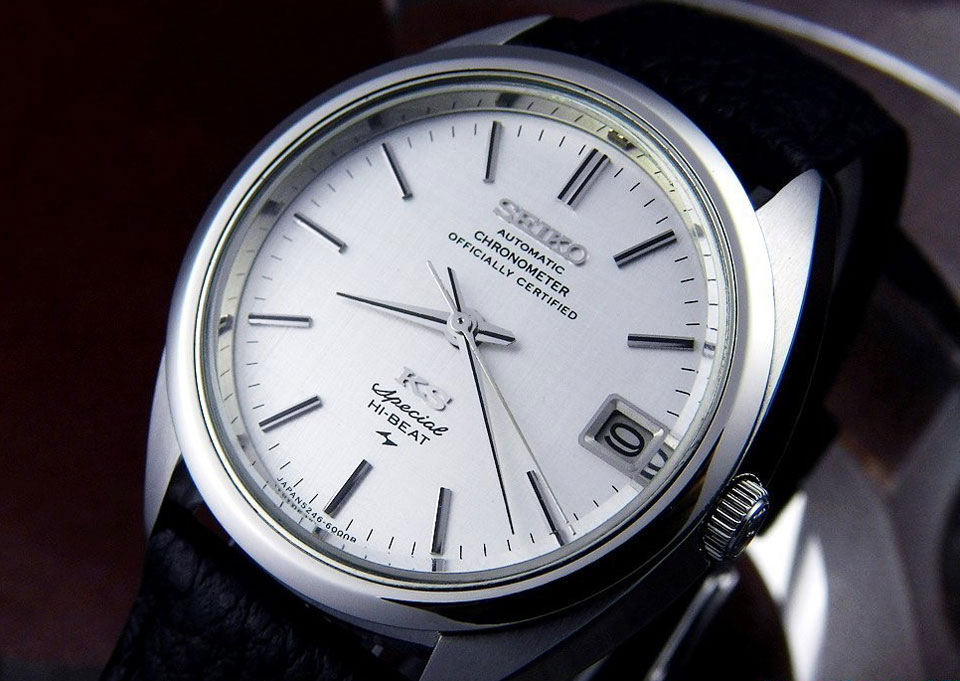
The 52 caliber series may have lagged in the frequency race, but it held its own in terms of accuracy and precision. The models with the ‘Special’ label (see photo above) were said to be at a standard near or even equal to the GS ‘AA’ standard. The whole fascination with accuracy and Hi-Beat movements at that time was bordering on becoming an unstable obsession for Seiko; so these 52 calibers may have lost out on the frequency race, but won back their fame by their durability.
In the end, the story of the GS and KS were both halted during the quartz revolution. The GS did made a daring comeback in 1998, which finally established it as the company’s flagship brand. Unfortunately for the KS, it did not receive the same treatment. But nonetheless, the KS remains one of Seiko’s biggest stepping stones to creating a truly Hi-Beat timepiece. It is obvious that the intense rivalry between the two subsidiaries was for the purpose of product development – and to mitigate risks. And as far as competition goes, one had to be declared a winner and another a loser. The Grand Seiko may have actually been crowned the company’s flagship watch, but in the eyes of collectors, aficionados and experts, and as far as feats of technology are concerned, the ‘King’ was never inferior to the ‘Grand’.
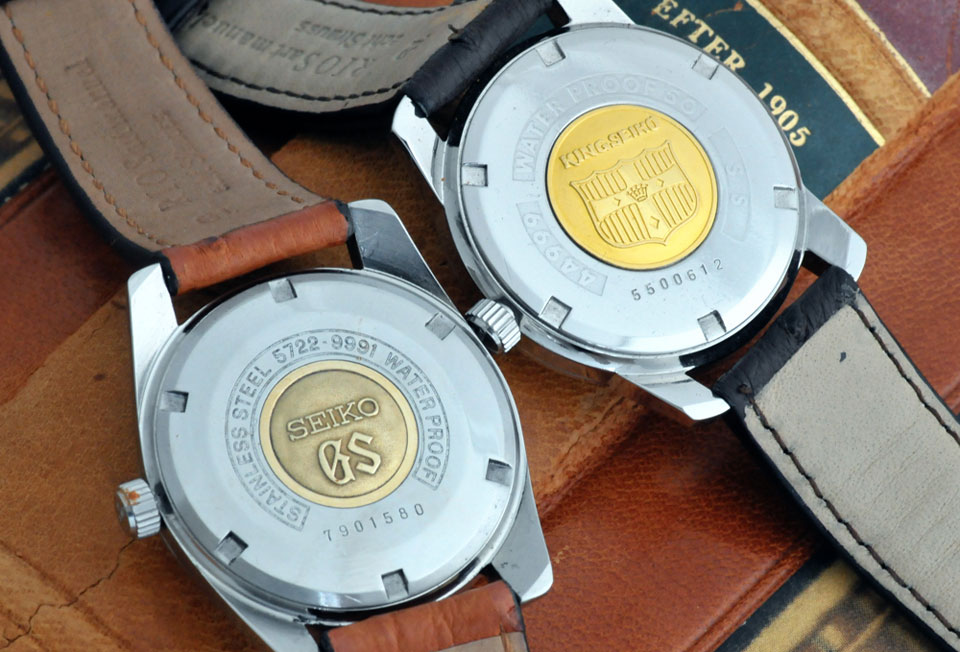
Reference: Seiko Accuracy Standards – a detailed assessment at the Seikoholics forum (click here)
Photo credits: Photo 4 and 6 go to Molle Watch (click here). Other photos come from various online sources.
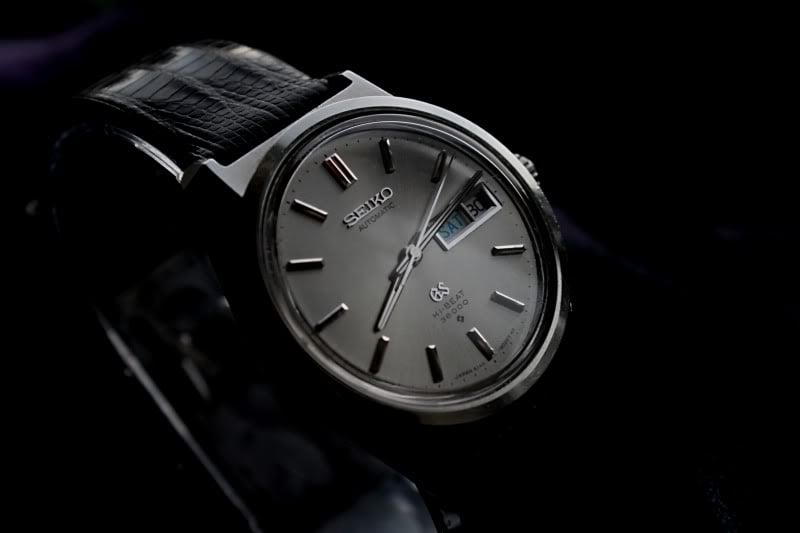



1 comment:
Get your authentic brand watch with a 75% discount over at Dexclusive.
Post a Comment